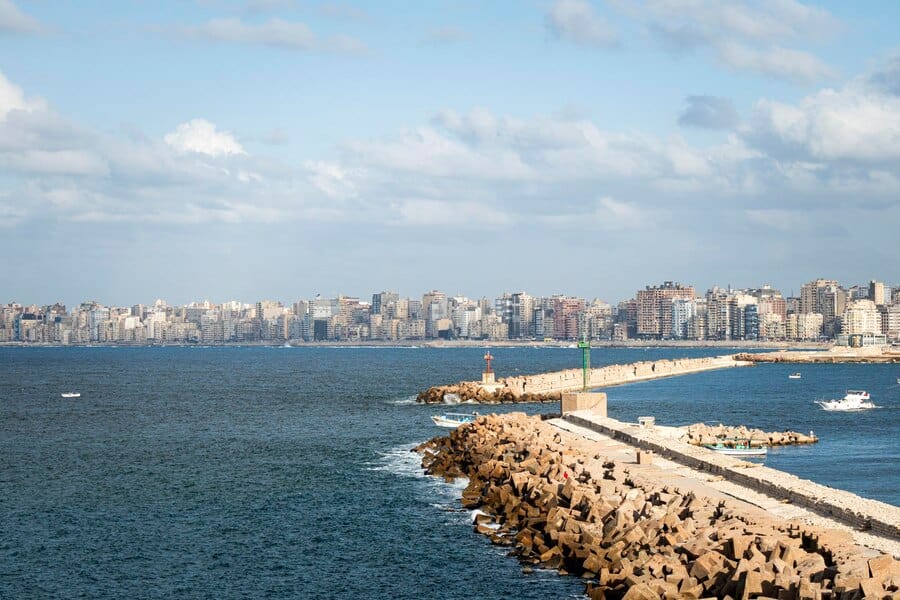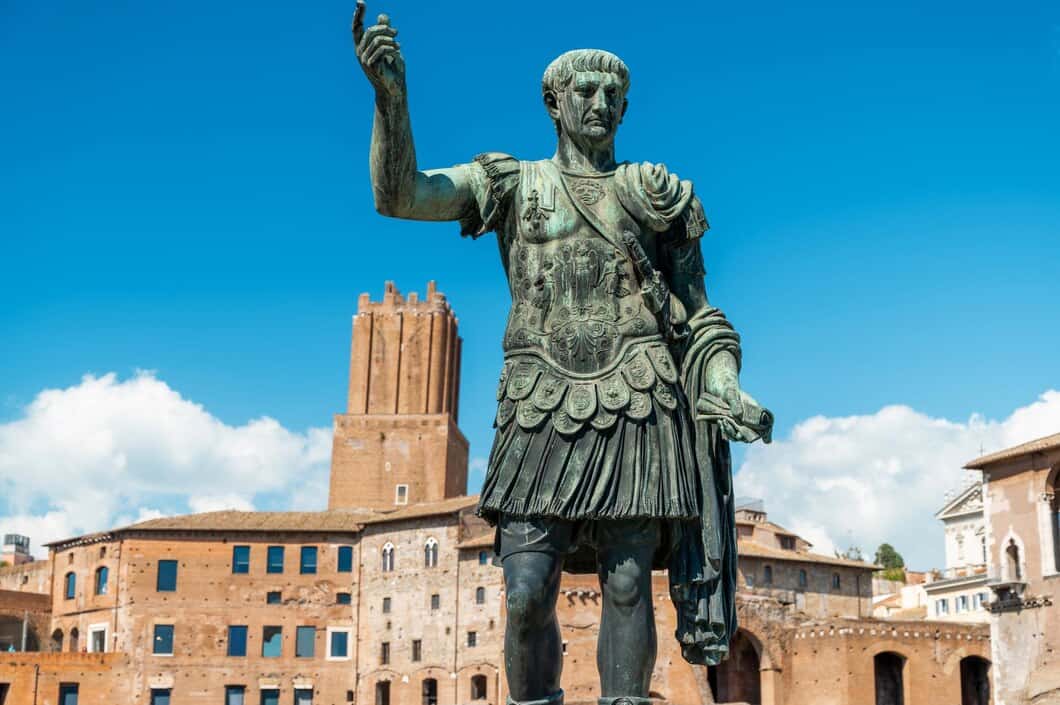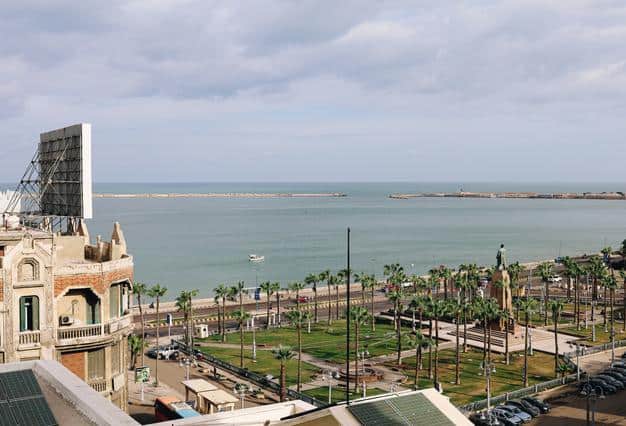
Egyptian History: Top 5 Interesting Facts – From Ptolemaic Period to Protectorate
Hundreds of Various Features of Egyptian History
Egyptian History or Egypt History is rich and full of interesting facts and developments. Egypt passed by various aspects of social and political life. It includes different periods with different rulers. Each stage has its own features and characteristics.
The Ptolemaic period is one of the stages in Egyptian history from 332 BC to 30 BC. One of the major signs of this period is Alexander the Great. Then, Egypt moved to the Romano Byzantine Period from 30BC to AD639. It was one of the leading civilizations in the world.
The Ottoman Period which started in 1517 to 1914 is another phase in the history of Egypt. It is known for Mohamed Ali’s reign and the major achievement of Suez Canal. Moving to Protectorate-Monarchy from 1914 to 1952, King Faruq deposed in July Revolution, 1952.
What are the Major Characteristics of the Ptolemaic Period (332–30BC)?
The Ptolemaic Period began when Alexander the Great defeated the Persians in Egypt in 332 BCE. After Alexander’s death, Ptolemy took Egypt. It was founded in 305 BC by Ptolemy I Soter, a companion of Alexander the Great, and lasted until the death of Cleopatra VII in 30 BC.
The Ptolemies initially ruled from Memphis but soon moved the royal court to Alexandria, which Alexander the Great had founded on the northwest coast of Egypt. Egypt was the wealthiest, however, and for much of the next 300 years the most powerful politically and culturally, and it was the last to fall directly under Roman dominion.

The country’s traditional practices and religious forms remained strong. The Ptolemaic rulers supported Egyptian religious groups.. During the first three reigns of the Ptolemaic dynasty, temple building projects of Dynasty 30 were continued by the new kings and official classes, closely following Egyptian styles.
Beginning in the mid second century BC, dynastic strife and a series of foreign wars weakened the kingdom, and it became increasingly reliant on the Roman Republic. Under Cleopatra VII, Egypt became involved in a Roman civil war, which finally led to its conquest by Rome as the last independent state.
Romano Byzantine Period (30BC–AD639)
The Roman Empire ruled a large part of Europe and northern Africa for hundreds of years. When the Roman Empire split into two separate empires, the Eastern Roman Empire became known as the Byzantine Empire.
The emperor Augustus (as Octavian was known from 27 BCE) subjected Cleopatra’s kingdom to his rule. Roman senators were not allowed to enter Egypt without the emperor’s permission. Egypt achieved its greatest prosperity under the shadow of Roman peace.

Egypt was now part of the Mediterranean world more than ever before. Products from Egypt (papyrus, grain) were sold across the whole Roman Empire. Products of other parts of the Empire were imported into Egypt.
The Romans and the Persians fought many battles over Egypt and other provinces. Eventually, the Persians were defeated. After this, another enemy appeared: the Arabs. The Byzantines were economically damaged by the battles with the Persians. They could not withstand the Arabs. Palestine, Syria and Egypt were lost between 635 and 645.

Arab Empire (639–1517)
The Muslim conquest of Egypt by the army of Amr ibn al-As, took place between AD 639. Egypt was governed as part of a series of Arab Caliphates. The various Caliphs, including the Umayyad and the Fatimid dynasties, kept hold of the country for almost 900 years.
The conquerors avoided using an established city such as Alexandria as their capital; instead, they founded a new city Al-Fusṭāṭ. A mosque was built in Al-Fusṭāṭ bearing the name of ʿAmr ibn al-ʿĀṣ. itself an important port and remained so until the 14th century.
Egypt was ruled by governors appointed by the caliphs throughout the Umayyad caliphate and well into the Abbasid. It’s main interest was to supply the central government with Egyptian taxes and grain. Egypt also became a base for Arab-Muslim expansion by both land and sea.
In the 9th century the Fatimid Caliphate, originating in modern Tunisia, wrested control of Egypt from the Abbasids and established a new capital called Al-Qahirah from which modern Cairo takes its name. In 1171 AD the Fatimids gave way to the Ayyubid Caliphate, founded by the famous general of the Crusades, Salah Ad-Din.
Through all of these changes in government Egypt remained an important part of the Muslim world. Egypt and the capital, Cairo, were of great geographic and political importance. Salah Ad-Din strengthened the fortifications of Cairo by building a citadel.
After the death of al-Ṣālih Ayyūb, a group of rebellious Mamluks assassinated his son and successor Tūrān-Shah and elevated al-Ṣālih’s wife Shajar al-Durr to the throne in 1250. She was later assassinated along with her husband Aybakin 1257.
The Mamluk leader, Quṭuz came to power after the death of Aybak and Shajar al-Durr. The Mongol leader sent an ambassador to Egypt to deliver terms taking control over Egypt. He ordered the Mongol ambassador put to death. Then, he won The Battle of ʿAyn Jālūt.
Soon after the Mamluk victory over the Mongols at ʿAyn Jālūt in 1260, Baybars I seized power by assassinating Quṭuz. He was the true founder of the Mamluk state. He ruled until 1277.
Then Egypt was under the control of the long reign of al-Malik al-Nāṣir (reigned 1293–1341). During this time, Egypt maintained economic prosperity and peaceful relations with foreign powers both Muslim and Christian.
After the death of Nāṣir in 1341, the state began to decline politically and economically. The best efforts of sultan as Qāʾit Bāy (reigned 1468–96) failed to make Egypt strong enough to defend its provinces against the campaigns of the Ottoman Empire.
The Ottomans defeated the Mamluks in 1516–17. Sultan Selim marched against Egypt in 1517, defeated the Mamluks, and installed Khayr Bey as Ottoman governor. Then, İbrahim Paşa was sent to Egypt by the sultan Süleyman I.
Moving to the French occupation, Napoleon started at Alexandria, then advanced to Cairo. Later, the Ottoman sultan, Selim III (1789–1807), declared war on France. Then, Napoleon resolved to return to France, and he succeeded in slipping away, past the British fleet, on August 22, 1977.
Kléber followed Napoleon in Egypt. He was assassinated by a Syrian Muslim, Sulaymānna al-Ḥalabī, on June 14, 1800. In 1801, the British invasion started. In March 1803 the British troops were evacuated in accordance with the Treaty of Amiens.
In July 1805, Sultan Selim III confirmed Muḥammad ʿAlī in office and the revolt ended. During his reign, Egypt again became an area of strategic significance. Muḥammad ʿAlī thus became effectively the sole landholder in Egypt.
The reign of ʿAbbās I started from 1848 to 1854. He turned to their British rivals, whose help was needed against the Ottomans. His death was mysterious and violent.

Then Saʿīd reigned according to the Egyptian History from 1854 to 1963.
He succeeded on ʿAbbās. He reached an agreement with his French friend Ferdinand de Lesseps to cut off a canal across the passages of Suez. This agreement resulted in a conflict between him and the Sultan and the British, whose overland railway route was threatened by the project.
Ismāʿīl, the son of Ibrāhīm Pasha, succeeded on the death of Saʿīd. He ruled from 1863 to 1879. In November 1869 the Suez Canal was opened to shipping. Ismāʿīl was given the special title of khedive.
In 1875 the Mixed Courts were established for Egyptians and foreigners. Ithad both foreign and Egyptian judges, who administered codes based on French law. Political tension increased in the last years of Ismāʿīl’s reign.
In1678 Egyptian revenue and expenditure were placed under the supervision of a British and a French controller. In June 1879, Sultan Abdülhamid II (reigned 1876–1909), instigated by France and Britain, deposed him in favour of his son, Muḥammad Tawfīq.
By 1881 a national group and an army group had allied to form what was called the National Party. A joint English and French note sent in January 1882 with the intention of strengthening the khedive against his opponents had the opposite effect.
The British government sent to the Suez Canal. The ʿUrābists were soundly defeated at Tall al-Kabīr (September 13, 1882), and Cairo was occupied the next day.
The Period of British Domination (1882–1952)
The British had secured the sole domination of Egypt. Tawfīq’s prestige was further weakened by the intervention of the British government. Two main problems confronted the occupying power: first, the acquisition of some degree of international acceptance for its special but vague position in Egypt, second, a definition of its relationship to the khedivial government.
Abbās II became the Khedive after The death of Tawfīq, his father. Abbas II was only 17 years old. He opposed the occupation and the British were against him too. He was trying to appoint his own nominee as a prime minister but the British managed to fail his trials.
A National Party has been founded and firstly led by Moustafa Kamil. He opposed the British occupation the same as the Khedive. Moustafa Kamil tried to improve the patriotism of the Egyptians. Finally the Khdeive agreed with Cromer.
In November 1914 Britain declared war on the Ottoman Empire and in December proclaimed a protectorate over Egypt, deposed ʿAbbās, and appointed his uncle, Ḥusayn Kāmil, with the title of sultan. Ḥusayn Kāmil died in October 1917 and was succeeded by his ambitious brother, Aḥmad Fuʾād.
On November 13, 1918, three Egyptian politicians headed by Saad Zaghloul demanded independence for Egypt and announced his intention of leading a delegation (Arabic wafd) to state his case in England. The British government refused and arrested Zaghloul.

Finally Zaghloul was released and led his delegation to the Paris Peace Conference (1919–20). They refused to accept his demand for independence for Egypt. Finally, The declaration of independence (February 28, 1922) ended the protectorate. On March 15 the sultan became King Fuʾād I (reigned 1922–36) of Egypt.
The Kingdom of Egypt (1922–52)
The Kingdom of Egypt was the legal form of the Egyptian state from 1922 until The Egyptian Revolution of 1952. Between 1936 and 1952, the United Kingdom continued to maintain its military presence, and its political advisers, at a reduced level.
During the reign of King Fuad, the monarchy struggled with the Wafd Party and with the British themselves, who were insisting to maintain their control over the Suez Canal. Other political forces appeared in this period included the Communist Party (1925), and the Muslim Brotherhood (1928), which eventually became a powerful political and religious force.
King Farouk came to the throne after the death of King Fuad in 1936. He was only 16 years old. In 1936, the Anglo-Egyptian Treaty required the United Kingdom to withdraw all troops from Egypt proper (excluding Sudan), except in the Suez Canal Zone (agreed to be evacuated by 1949), but permitted the return of British military personnel in the event of war.
In 1940 the British obliged King Farouk to dismiss his prime minister Ali Mahir and appoint a more cooperative one. King Farouk had to accept Al Nahhas. In 1944 King Farouk replaced Al Nahhas with Ahmed Maher, but he was assassinated in February 1945.
At the end of World War II, Egypt was in a thoroughly unstable condition. Demonstrations in Cairo became increasingly frequent and violent. All the opponents demanded to carry out the Anglo-Egyptian Treaty. Egypt referred the dispute to the United Nations (UN) in July 1947 but failed to win its case.
Egypt witnessed political instability after its unexpected defeat in the first Arab-Israeli war (1948–49) which was launched because of the declaration of the State of Israel in May 1948. At mid-century Egypt was ready for revolution by the Free Officers on July 23, 1952. Since then , Egypt has started a new era.
History of Egypt is full of ups and downs, challenges and changes. Egypt moved from Ptolemic to Roman-Byzantine. Egypt spent 72 years under the British Occupation. There were prefects, Khedives and kings titled for the rulers. Finally, In 1952, Egypt was declared as The Arab Republic of Egypt.
If you enjoyed this content why not dive into some more historical eras – check out these articles: Vikings History, Ancient Rome, Ancient Egyptians – The First Woman Pharaoh, Greek Mythology – Medusa, Native American History. or Celts
Why not subscribe to our LearningMole Library for as little as £1.99 per month to access over 1300 fun educational videos.


Leave a Reply